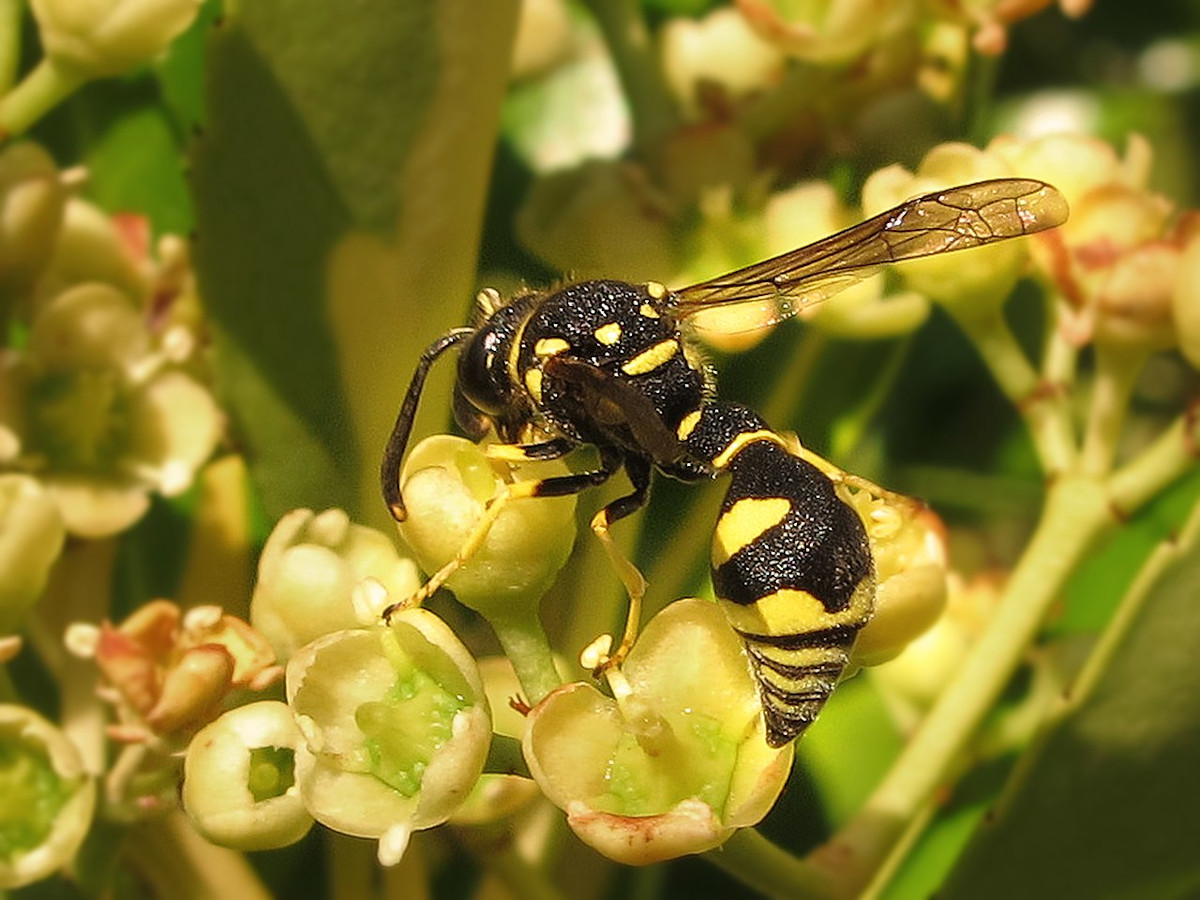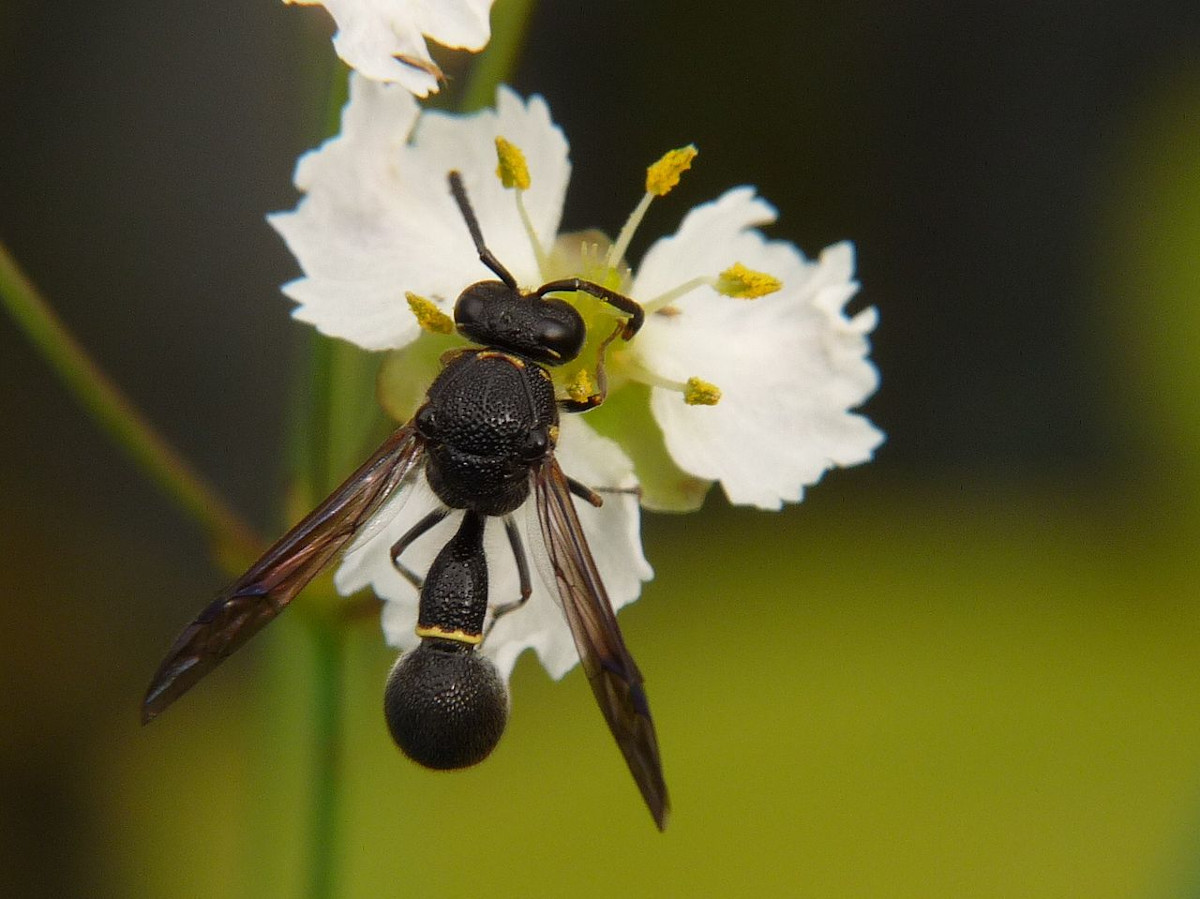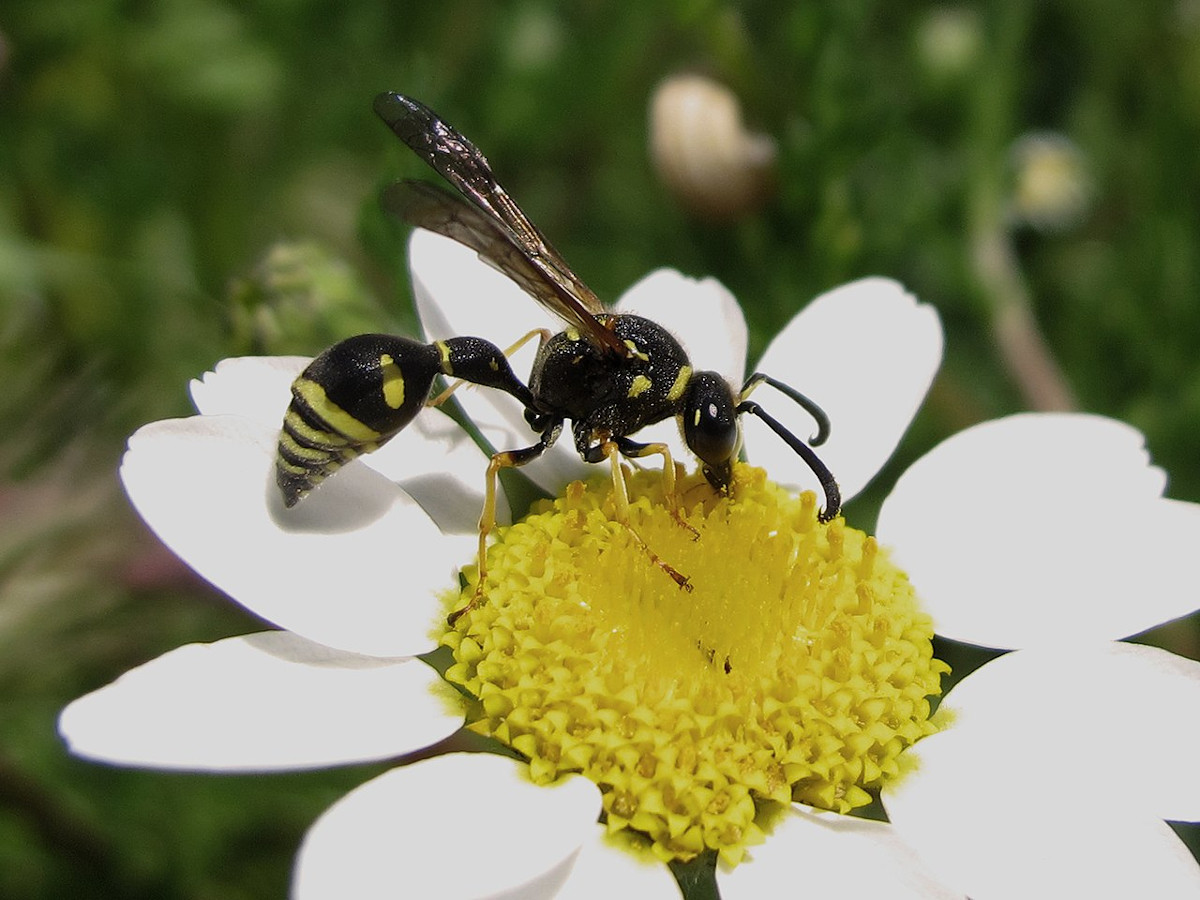
The kingdom of bees is quite wide, and you can find very different specimens. For example, with the potter bee, named in this way because of the peculiar way it has to make its nest as if it were an artisan.
If you want to know what the potter bee characteristics, the habitat where they reside, the types that exist, as well as their feeding and reproduction, take a look at what we have prepared.
Potter Bee Characteristics
The potter bee, scientifically named Eumeninae, is an insect that reaches 0,9-5 centimeters in length, a little more in the case of queens. They have a different body from other bees, because they have an abdomen more separated from their body, and a part of it is very fine and long, flexible, in order to give them more agility both when flying and when moving around. plants, other surfaces or even their nest.
They can be found in different colors, but they are predominantly black with brown or yellow stripes. However, there are also species that are brown with yellow, orange, white or red stripes.
As for life expectancy, it is quite short. In the case of males, only 1 month; females can last 2-3 months, time spent reproducing and creating the nest.
The sting
If you are unlucky enough to come across a potter bee and it stings you, we are not going to tell you that it will not be painful. It will be. But it is not poisonous. Although it has poison, and it uses it to defend itself or defend its nest, the truth is that it is not powerful and the only thing you will have is a small inflammation in the area.
It is important that, if the sting has remained inside, withdraw to prevent further inflammation and poison entering your body.
After a few hours, the pain and inflammation will subside.
Now, you do have to be careful if you are allergic to potter bee sting. The symptoms that you could have, in addition to swelling, is that it spreads, not only through the area of the wound, but to the lips, tongue or extremities. Another symptom is the appearance of a red rash, hot skin, dizziness or dizziness, nausea, loss of orientation and intense pain.
In these cases, it is necessary to go immediately to a health center since treatment is needed to alleviate the problem (it is not fatal, but it is dangerous, especially if you suffer from anaphylactic shock).
Habitat
Except in Antarctica The potter bee can exist anywhere in the world as it adapts well to different environments. Although it prefers areas where there are plants and vegetation so that it can easily find food, it is known that some species of this flying insect are capable of living in the same desert.
Unlike others, the potter bee is not very nomadic, it likes to live and reproduce in the same place. In addition, it is solitary, and does not live with other specimens (except specific species that do).
The nest of the potter bee

Undoubtedly, one of the most striking features of the potter bee is its nest. And it is that both manufacturing it and the way it is given is curious and at the same time original of its kind. To begin with, the potter bee does not form a hive. Its task, as "female and queen" is to create nests and lay eggs, in addition to taking care of them so that they grow and be able to create another nest and other eggs.
The nests are a combination of earth, mud, mud, saliva... With this they create little balls that will give shape to that place where the eggs will be housed inside put the female And only the female, since it is not for anyone else to enter.
[related url=»https://infoanimales.net/bees/african-bee/»]
In addition, these nests are usually placed on the ground, although it is true that sometimes they use the ceilings, attics or areas at medium height.
Types of potter bee
Within the potter bees, there are several types that should be known. Some experts consider that they may be separate species, that is, not subtypes of an original one, but others differ from that statement. Therefore, here we are going to tell you about the types that exist and their similarities and differences.
pollen potter bee
This insect feeds, as its name says, on the pollen of the flowers. Her behavior is more bee-like than wasp-like, but her features confuse her with a wasp.
The nest they create is made of mud and they are solitary. What sets them apart? Its wings are not very flexible and also look like a mass.
You can find it in America mainly.
Tropical and subtropical potter wasp

Another of the types that you have is this one, where there are actually more than five different types. It is characterized by having a very narrow abdomen and, in the case of males, forward curved antennae.
The females are similar to the workers, they only differ in behavior, and in characteristics that are not easy to distinguish.
vespino potter bee
They are more closely related to wasps, because their behavior differs. In this case, they are more sociable with other species and their nests are more like stacked sheets of paper than the mud ones these insects normally make.
As well can kill the queen bee or wasp of a nest and force workers and drones to take notice and take care of their eggs to create their own nest (without actually creating it).
Potter bees Euparagiinae and Stenogastrinae
In the case of the Euparagia, it is characterized by having veins on the wings, as well as a spot on the thorax and legs that are different from the characteristic potter bee. You can find it in Mexico and the United States.
For its part, the Stenogastrinae has several species, and they are not well known. They can fold their wings (not longitudinally) and are very flexible. They live mainly in India and Indonesia and their colors can differ (red, black, white...).
Pottery bee feeding

Pottery bee feeding consists mostly of pollen and nectar. It is what you get from the flowers in your environment. However, that does not mean that it does not attack other insects or larvae and feed on them. It can also happen.
Unlike other insects, this one usually has its "food" area and nests very close since, despite being solitary, when it deals with creating nests and caring for the larvae, it prefers not to stray too far from them. In fact, once the young leave the nest, they follow the same route as the mother to feed.
Reproduction of the potter bee
The reproduction of the potter bee does not differ much from that of other insects, especially wasps or bees. In this case, both the male and the female, when the time comes, which is usually in autumn, come together in the copulation causing the female to store the male's sperm in her body. These will be kept inside until it is ready to start reproducing and once it has a rudimentary nest with which to care for the eggs and larvae.
[related url=»https://infoanimales.net/bees/japanese-bee/»]
The first clutch of eggs is not too large, and it takes care of all the larvae and waits for them to become adults. However, something you should know is that the adult specimens are not going to live in the nest. This is just for the larvae to grow. In fact, the "queen" bee will dedicate her life to creating nests and laying eggs in them. When one finishes, she immediately goes for another. So until she dies.